- SilverWare
- Wooden Furniture & Craft
- Wooden Nautical Gift
- Wooden Block
- Wooden Rehal[Book Reading]
- Wooden Table Corner
- Wooden Incense Stick Burner
- Wooden Cutlery & Cigar Pipe
- Wooden Almira
- Wooden Walking Stick & Stand
- Wooden New Development Furniture
- Wooden Lamp
- Wooden Dinning Set
- Wooden Chess & Game Box
- Wooden Chess
- Wooden Mango Wood European Style Furniture
- Wooden Extension
- Wooden Drawer
- Wooden Meena Work Antique
- Wooden Teak Wood European Style Furniture
- Wooden bed side
- Wooden Photo Frame
- Wooden binary table
- wooden bench
- Wooden Office Desk
- Wooden Jewellery
- Wooden Swing
- wooden drawer chest
- Wooden Tvc
- Wooden Stationary
- Wooden Table Piller
- wooden wine bar
- Wooden Mislinius Furniture
- Wooden Pen Holder & Pen Box
- Wooden Box
- wooden chair
- Wooden Screen
- Wooden House Hold Product
- Wooden Ash Tray
- Wooden Side Board
- Wooden Mirror Frame
- Wooden Coaster
- Wooden Candle Stand
- Wooden Table Octangle
- ALUMINIUM
- Musical Instrument
- Stallone Pig Bristle
- Rugs & Carpet
- Stone Product
- IRON WARE
- Zinc Oxide
- GUAR GUM
- Brass Nautical & Marine Re-Production Instrument
- Brass Clinometer
- Brass Abney Level
- Brass candle stand
- Brass Ship Clock
- Sailers Wheel
- Brass Microscope
- Brass Flower Base
- Brass Ship Telegraph
- Brass Ship Anchor
- Brass Porthol Window
- Brass Photo Frame
- Brass Sextant
- Brass Mix Nautical Gift
- Brass Weather Instrument
- Brass Ashtray
- Brass Sand Timer
- Brass Boat Horn
- Brass Ship Bell
- BRASS CHRISTMAS DECORATIVE
- Brass Theodolite
- Brass Divider
- Brass Vernier Caliper
- Brass Kitchenware
- Brass Surveying Level
- Brass Nautical Key Chain
- Brass Pully [Reel]
- Brass Napkin Ring
- Brass Diving Helmet
- Brass Magnifier
- Brass Rain Guage
- Brass Bottle Opener
- Brass Ship Lamp
- Brass Compass
- Brass Lamp
- Brass T Light Holder
- Brass Globe
- Brass Porthol Mirror
- Brass Binoculers
- Brass Search Light
- BrassWare New Range
- Brass Flag Hook
- Brass Measurement Tape
- Brass Telescope
- Brass Gong
- Medieval Armoury
- Bronze Statue
- Home
- About us
- ShopNew

50% OFF FOR
New collection
Free shipping & free returns on dresses

Hot week
Discover the selection
Shipping worldwide only 5 days - Executive Member
- Contact us
- SilverWare
- Wooden Furniture & Craft
- Wooden Nautical Gift
- Wooden Block
- Wooden Rehal[Book Reading]
- Wooden Table Corner
- Wooden Incense Stick Burner
- Wooden Cutlery & Cigar Pipe
- Wooden Almira
- Wooden Walking Stick & Stand
- Wooden New Development Furniture
- Wooden Lamp
- Wooden Dinning Set
- Wooden Chess & Game Box
- Wooden Chess
- Wooden Mango Wood European Style Furniture
- Wooden Extension
- Wooden Drawer
- Wooden Meena Work Antique
- Wooden Teak Wood European Style Furniture
- Wooden bed side
- Wooden Photo Frame
- Wooden binary table
- wooden bench
- Wooden Office Desk
- Wooden Jewellery
- Wooden Swing
- wooden drawer chest
- Wooden Tvc
- Wooden Stationary
- Wooden Table Piller
- wooden wine bar
- Wooden Mislinius Furniture
- Wooden Pen Holder & Pen Box
- Wooden Box
- wooden chair
- Wooden Screen
- Wooden House Hold Product
- Wooden Ash Tray
- Wooden Side Board
- Wooden Mirror Frame
- Wooden Coaster
- Wooden Candle Stand
- Wooden Table Octangle
- ALUMINIUM
- Musical Instrument
- Stallone Pig Bristle
- Rugs & Carpet
- Stone Product
- IRON WARE
- Zinc Oxide
- GUAR GUM
- Brass Nautical & Marine Re-Production Instrument
- Brass Clinometer
- Brass Abney Level
- Brass candle stand
- Brass Ship Clock
- Sailers Wheel
- Brass Microscope
- Brass Flower Base
- Brass Ship Telegraph
- Brass Ship Anchor
- Brass Porthol Window
- Brass Photo Frame
- Brass Sextant
- Brass Mix Nautical Gift
- Brass Weather Instrument
- Brass Ashtray
- Brass Sand Timer
- Brass Boat Horn
- Brass Ship Bell
- BRASS CHRISTMAS DECORATIVE
- Brass Theodolite
- Brass Divider
- Brass Vernier Caliper
- Brass Kitchenware
- Brass Surveying Level
- Brass Nautical Key Chain
- Brass Pully [Reel]
- Brass Napkin Ring
- Brass Diving Helmet
- Brass Magnifier
- Brass Rain Guage
- Brass Bottle Opener
- Brass Ship Lamp
- Brass Compass
- Brass Lamp
- Brass T Light Holder
- Brass Globe
- Brass Porthol Mirror
- Brass Binoculers
- Brass Search Light
- BrassWare New Range
- Brass Flag Hook
- Brass Measurement Tape
- Brass Telescope
- Brass Gong
- Medieval Armoury
- Bronze Statue
SA0249 Norman /NASAL Helmet – Early Medieval
Norman /NASAL Helmet – Early Medieval
Norman /NASAL Helmet – Early Medieval
nasal helmet was characterised by the possession of a nose-guard, or ‘nasal’,
composed of a single strip of metal that extended down from the skull or
browband over the nose to provide facial protection. The helmet appeared
throughout Western Europe late in the 9th century, and became the predominant
form of head protection, replacing previous types of helmet whose design was
ultimately based on Late Roman types such as the ‘ridge helmet’ and early helmets
of spangenhelm construction. Early nasal helmets were universally conical in
shape. The skull could be raised from a single sheet of iron or be of composite,
segmented (spangenhelm) construction. The spangenhelm variety was, in general,
the earlier method of construction. Single-piece skulls, being technically more
difficult to produce, became more common with the increase in metallurgical skill
over time.Though nasals had been used on earlier helmets, and on contemporary
helmets found in Byzantium, Slavic Eastern Europe and the Middle East, those
characteristic of the nasal helmet were in general larger and were fully integrated
into either the skull or browband of the helmet.The nasals of other helmets
tended to be riveted to the skull either directly or as part of a, ‘T’ shaped,
combined nasal and eyebrow-piece.
Related products
Copyright © STALLONE OVERSEAS PVT. LTD. All rights reserved.
- Home
- About us
- ShopNew

50% OFF FOR
New collection
Free shipping & free returns on dresses

Hot week
Discover the selection
Shipping worldwide only 5 days - Executive Member
- Contact us




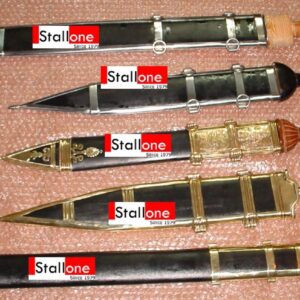
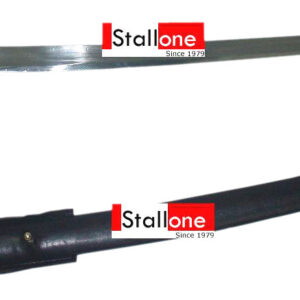
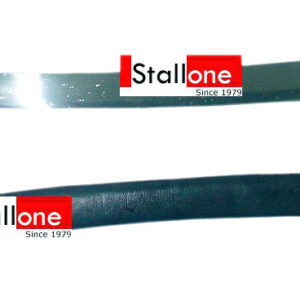
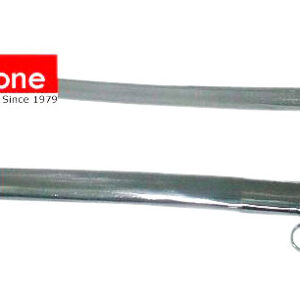
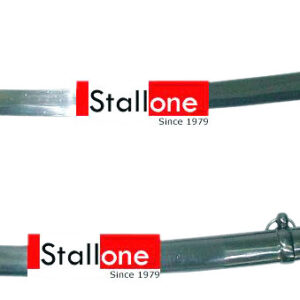
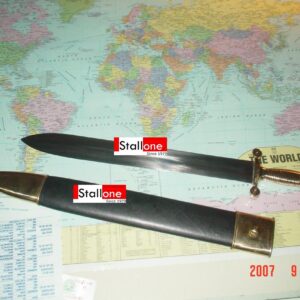
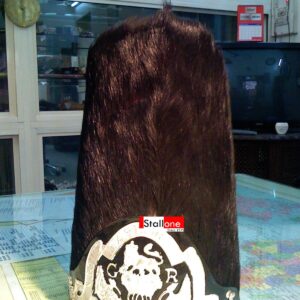
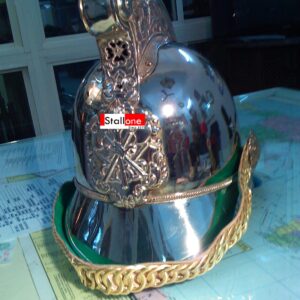
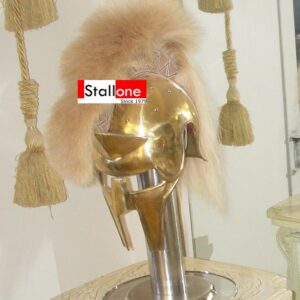
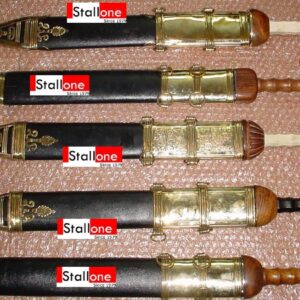
Reviews
There are no reviews yet.